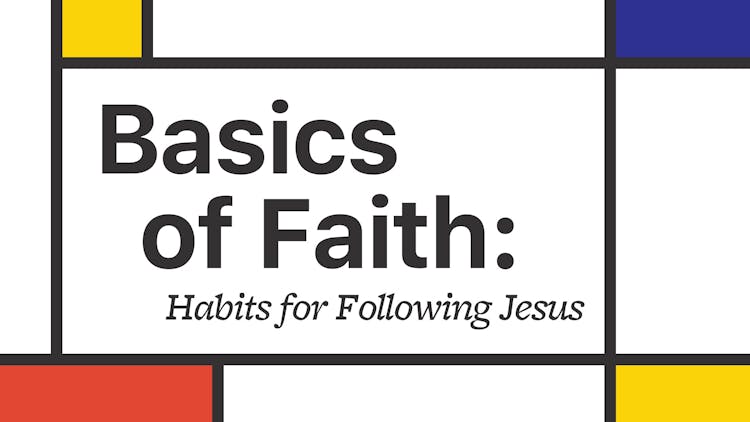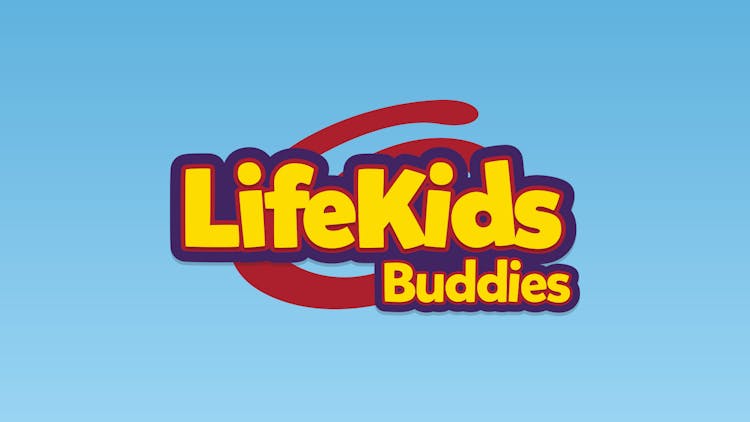Hello, Switch Support Leader. My name is Abigail. I’m a few years out of high school now, but I can still vividly remember my first night at Switch. I wasn’t really into the whole “church thing,” and I had only gone because my mom told me I had to. It helped that I had a few friends I was meeting there, but it didn’t take away the nerves I felt as I walked in the doors for the first time.
When I got there, I checked in, put on my name tag, and began wandering around. The lobby music was cranked up, and I could feel the beat throughout my bones. The leaders were high-energy (which I would soon grow to love).
But I was overwhelmed.
My friends still hadn’t shown up yet, and I was beginning to think that I needed to leave. I was uncomfortable and needed fresh air. So I made my way to the door, just as my friends walked in. I remember feeling trapped; there was no way I could leave now. So my friends got checked in and then we went and hung out by the wall, as separated from the chaos as possible. One of the Switch leaders came up to us as we were talking and joined our conversation. Over the next several minutes, I could feel myself loosening and feeling a sense of peace.
As we made our way into the auditorium for worship, I was hit with another round of chaos. Many of the leaders were lined up giving high fives to everyone as we walked in. The stage was filled with a band, and the lights reminded me of the concert I had been at a few weeks earlier.
And again, I was overwhelmed.
Following worship, as the message started, I remember the undeniably strong sense that I was there for a reason. As I looked down my row and saw my friend and the leader, I was overcome with a sense of peace and safety. Then, as our youth pastor introduced me to Jesus, I felt my hand in the air, strong and confident.
My life was forever changed.
As I think back to this night, I can close my eyes and see the lobby and the lights. I can hear the chatter of students and leaders talking over the music. But I also remember the initial feeling of being out of place. I didn’t know where I was supposed to go or who I was supposed to talk to.
And I realize that my brother could easily feel the same way, if not even more over-stimulated. When I walked into Switch that first night, I had visual cues. I could see where people were. I knew when we were moving from the lobby to the auditorium, and then from the front of the stage to our seats. My brother wouldn’t have these non-verbal cues because of his vision—or lack thereof.
My brother was born blind. As a result, his other senses are automatically heightened. So when I think about a Switch experience for him, my heart starts to race because I know he would be just as overwhelmed, if not more, too.
I think about the leader who chose to be with my friend and me on my first night, and I am so grateful an intentional leader like that is available for someone like my brother.
So we’re going to look at this same night, but from the perspective of my brother. And as we go, we’ll look at some of the important things to keep in mind when you’re supporting a blind or visually impaired student. You can also review some of the best practices at the end.
Pre-Experience
There is a lot going on when students start arriving at Switch. There are loud games, music, and groups of students talking with each other. Your student processes their surroundings by listening to the sounds around them. This can quickly be over-stimulating and overwhelming. Here are some things you can do to support them.
- Be prepared to meet your student at the door. Welcome and greet them personally. Always introduce yourself by name, even if you have a well-established relationship. Do: “Hey, Tyler! It’s Abigail! I’m glad to see you!” Don’t: Guessing games like, “Do you know who I am from my voice?” aren’t considered very fun or even respectful to the blind or visually impaired community.
- Assist them through the check in process. You can be a human guide and can lead the student to the check in station. Do: Ask something like, “Would you like me to guide you to check in?” They may place a hand on your shoulder or on your arm as you guide them. Don’t: Grab their hand and assume you can lead them around.
- Find quieter places to talk. It’s easy to catch yourself shouting across the noises of the lobby. Find a spot along the wall or at a table to talk with your student. Let them know what activities are set up, and help them get connected with other students.
- Stay with your student. When you get your student connected with others, make sure you don’t leave without communicating. It’s okay to grab something or give the student space to build relationships with others; just let your student know where you’ll be.
Worship and Message
I remember feeling like I was in a mosh pit the first time I experienced worship at Switch. People were standing closer to me, there was jumping and clapping, and it would have been easy for me to lose my friend. This is a great time to build that relationship with your student by staying near them and watching those around them.
Try out some of these tips!
- Stand on the same side of your student throughout worship. Your student will likely have a preferred side for you to stand on. As you join the crowd for worship, reassure your student that you are near them and watching the area around them. This will give them the confidence and safety to worship, instead of worrying about how close others are to them.
- Don’t feel like you need to stay on the edge. Some students, like my brother, want to be in the middle of everything. Other students could feel uncomfortable if they’re close to others or in the center of chaos. Encourage your student to choose the option they’re the most comfortable with and help them be where they want to be.
- Offer something to soften the noise. Worship is holy and beautiful, but it’s also loud. Your student may want to participate in worship with the others but be overwhelmed by the volume. Your campus will have noise-cancelling headphones or ear plugs, so these are resources you can offer. If you’re not sure where to find these options, reach out to your coach or youth pastor.
As worship transitions into the message, there’s a rush of students to fill the seats. Guide your student back to rows and help them find a seat. When the message begins, keep the following in mind.
- Your student may miss the visual cues that communicate major ideas. Ask your student if they would like additional verbal descriptions of what is taking place. Take the time to explain any graphics or actions that pertain to the message using rich language like, “Now the pastor is slowly taking steps across the stage to illustrate walking away from temptation.” Be aware of your whispering because it could be distracting for those around you. Another approach would be inviting your student to ask when they want more details about the message so that you aren’t over-describing to them either.
Small Group Discussion
This is a great opportunity to equip your student to be independent in a safe space. Once the message is over, help your student find their small group. Here are some ways you can help your student transition into this portion of the night.
- Introduce your student to the others in the group. Once your student is with a group, have the other students and leaders introduce themselves. This will help them identify who is talking during the discussion.
- Use this time to foster independence. While the one-on-one benefits of Switch Support are undeniable, it is also important to allow your student to feel empowered and independent. Taking a step away from them during this time is a great way to do just that! Remember to let your student know where you are going, and when you’ll be back.
Best Practices
I’m sure you’ve noticed some of the recurring tips as you looked through the experience. Here are some of the main points:
- Don’t leave your student without letting them know where you’re going, and when you’ll be back.
- Find the balance between assistance and independence.
- If your student uses a white cane, be sure other students are respectful of it. Other students may become curious about it and even want to experiment with it. It is not to be touched by anyone except the student it belongs to, unless the student insists it’s okay. Even then, maintain close supervision, and return it to your student very quickly.
- Remember: Your student processes their environment with their ears. Make sure to offer quiet spaces and noise-cancelling resources.
- Use specific language. “Reach your right arm forward, and there’s your chair,” or, “In about 10 steps forward, there are two stairs going up,” or, “I’m sitting two feet behind you on your left.” Remember: “Over here, over there” aren’t helpful phrases.
- Does your student have a peer mentor? This could be another resource that would make their time at Switch more meaningful and help them build more relationships, too.
Remember that every student is unique in their preferences and personality. What may work well for one student may not be beneficial for another. It’s always okay to ask your student questions about their preferences so that you’re better able to assist them, while also giving them the freedom to connect with others.
Want to hear directly from my brother? Here’s an interview with him, where he tells peer mentors what they can mean in the life of someone who’s blind or visually impaired.


